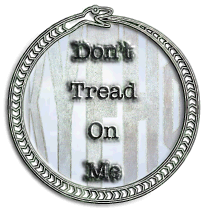|
|
entry index
UCLA professor confirms media biasMeg Sullivan wrote in the UCLA
News.
While the editorial page of The Wall Street Journal is conservative, the newspaper's news pages are liberal, even more liberal than The New York Times. The Drudge Report may have a right-wing reputation, but it leans left. Coverage by public television and radio is conservative compared to the rest of the mainstream media. Meanwhile, almost all major media outlets tilt to the left. These are just a few of the surprising findings from a UCLA-led study, which is believed to be the first successful attempt at objectively quantifying bias in a range of media outlets and ranking them accordingly. "I suspected that many media outlets would tilt to the left because surveys have shown that reporters tend to vote more Democrat than Republican," said Tim Groseclose, a UCLA political scientist and the study's lead author. "But I was surprised at just how pronounced the distinctions are." "Overall, the major media outlets are quite moderate compared to members of Congress, but even so, there is a quantifiable and significant bias in that nearly all of them lean to the left," said co‑author Jeffrey Milyo, University of Missouri economist and public policy scholar. The results appear in the latest issue of the Quarterly Journal of Economics, which will become available in mid-December. Groseclose and Milyo based their research on a standard gauge of a lawmaker's support for liberal causes. Americans for Democratic Action (ADA) tracks the percentage of times that each lawmaker votes on the liberal side of an issue. Based on these votes, the ADA assigns a numerical score to each lawmaker, where "100" is the most liberal and "0" is the most conservative. After adjustments to compensate for disproportionate representation that the Senate gives to low‑population states and the lack of representation for the District of Columbia, the average ADA score in Congress (50.1) was assumed to represent the political position of the average U.S. voter. Groseclose and Milyo then directed 21 research assistants — most of them college students — to scour U.S. media coverage of the past 10 years. They tallied the number of times each media outlet referred to think tanks and policy groups, such as the left-leaning NAACP or the right-leaning Heritage Foundation. Next, they did the same exercise with speeches of U.S. lawmakers. If a media outlet displayed a citation pattern similar to that of a lawmaker, then Groseclose and Milyo's method assigned both a similar ADA score. "A media person would have never done this study," said Groseclose, a UCLA political science professor, whose research and teaching focuses on the U.S. Congress. "It takes a Congress scholar even to think of using ADA scores as a measure. And I don't think many media scholars would have considered comparing news stories to congressional speeches." Fascinating stuff, and it may be the most accurate study on the subject so far. Just so there is no confusion, I see nothing wrong with media bias IF that same media doesn't try to pass itself off as unbiased arbitrators of the truth. 
Posted: Mon - December
19, 2005 at 04:34 AM
|
 Pagan Vigil
Pagan philosopher, libertarian, and part-time trouble maker, NeoWayland watches for threats to individual freedom or personal responsiblity. There's more to life than just black and white, using only extremes just increases the problems. My Thinking Blogger Nominees
Recent
Comments Search
Categories
Guest
Articles Interested in Pagan•Vigil hosting your articles? I'm always looking for tantalizing content that makes people think. Look here for details. E Pleb Neesta AdSense
Pagan Vigil assumes no responsibility for the advertisement content provided by Google, which is neither selected nor endorsed by NeoWayland.
NeoLinks
The News Right Now Radio Free Europe/Radio Liberty
Reason Magazine - Hit & Run Sunni Maravillosa and the Conspirators
Hammer of Truth Life, Liberty and the Pursuit of... Lady Liberty's Constitution Clearing House Law Enforcement Against Prohibition
no authority Center for a Stateless Society
Tammy Bruce.com Latino Issues: A Conservative Blog
The Nation
RealClimate
Papers, Please!
Letter from Hardscrabble Creek
You Are Not Alone A Big Idea from Eject! Eject! Eject! Fully Informed Jury Association World's Smallest Political Quiz Animated Introduction to the Philosophy of Liberty Institute for Liberty and Democracy
World of Ends 60 Second Refutation of Socialism, While Sitting at the Beach from Coyote Blog
World Religions - Religious Forums Ontario Consultants on Religious Tolerance
Who links to me? NeoBlogs
Books
Listmania - Liberty Basics
Legal
All Guest Articles are © copyright by their respective authors for the date given and subject to the specific restrictions and permissions as stated in that article entry. Guest Article restrictions and permissions are specific to each article and may not be applied to another Guest Article.
Views and opinions expressed in Guest Articles do not necessarily reflect those of NeoWayland. Content from other sources is quoted under the fair use laws of the United States with clear reference to the source material. Unless otherwise noted, all other content at :
www.paganvigil.com Additional Redirect/Frame pages may be found at these web addresses:
members.aol.com/ If your web browser does not show one of these addresses, then this page being used without permission of the author. The views expressed by NeoWayland are his own and do not represent any other enity. NeoWayland freely accepts individual and sole responsibility for his words and actions. XML/RSS Feeds
Statistics
|